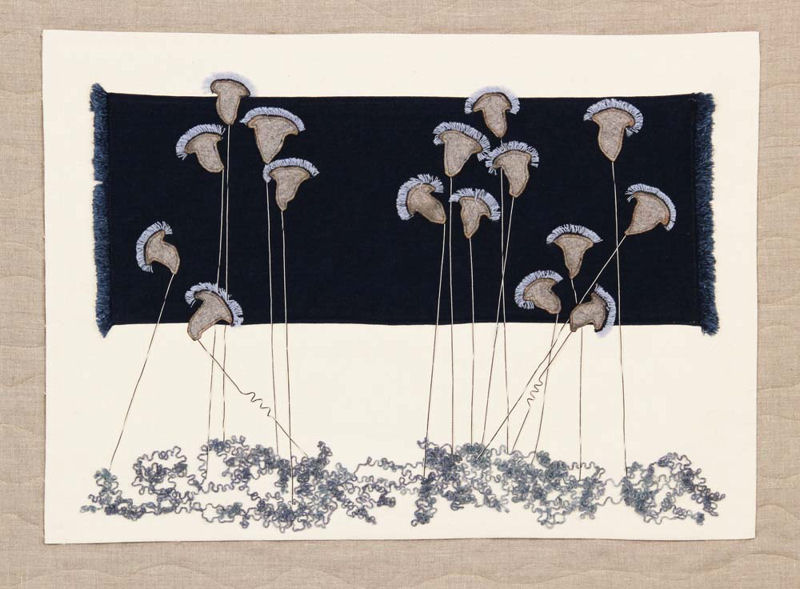
After spending 18 months at the Stickney Water Reclamation Plant in Cicero, Ill., Lindsay Olson created the “Manufactured River” art exhibit which includes this Stalked Ciliate Vorticella piece. Photo courtesy of Olson.
“I create conceptual art about municipal wastewater treatment,” said no one ever – until Lindsay Olson came along.
Olson has boldly gone where no artist has gone before: the Stickney Water Reclamation Plant in Cicero, Ill., the world’s largest wastewater treatment facility, according to the Metropolitan Water Reclamation District of Greater Chicago, which operates the facility.
During Olson’s 18-month stay at the facility, the artist learned about biosolids, phosphorous recovery, and the science behind wastewater treatment. She transformed her learning into art pieces with names that only a microbiologist could love, such as “Crawling Ciliate Aspidisca” and “Aeration Tank 3.” Since being created, these and other wastewater inspired pieces have been exhibited at multiple events and conferences including the Water Environment Federation’s annual technical exhibition and conference, WEFTEC.
How did an artist like her end up in a place like this?
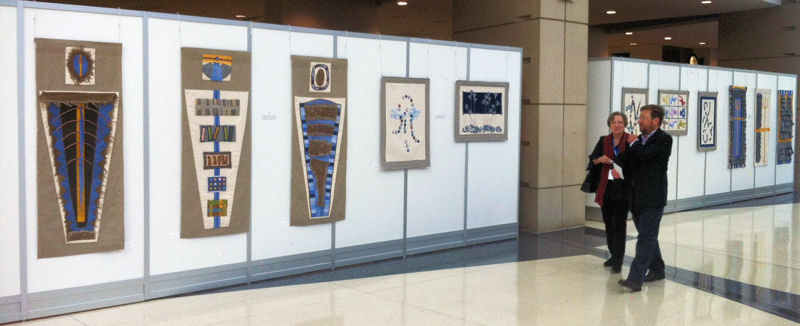
The Manufactured River exhibit was displayed at WEFTEC 2013 in Chicago. Photo courtesy of Olson.
Olson’s professional career did not start by focusing on science. She has been a part-time textiles instructor at Columbia College Chicago since 1999. “I’m an artist,” she said. “I have spent a lifetime trying to avoid math and science.”
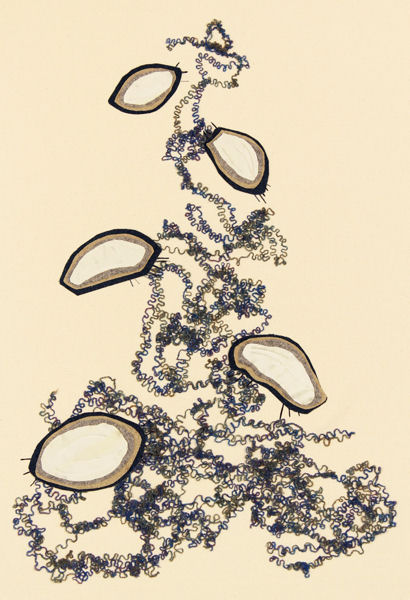
Olson’s wastewater inspired art, such as this Crawling Ciliates Aspidisca piece, was created to help others discover and learn about science. Photo courtesy of Olson.
That changed on a canoe trip six years ago when Olson came upon a sidestream elevated pool aeration (SEPA) station. “I was painting idealized landscapes of waterways at the time. That meant taking out power lines and other distractions,” she explained. The SEPA station was just the kind of “distraction” she’d normally omit from her work. “But I found myself wondering what it was and how it worked,” she explained.
After that experience, Olson said her approach changed. She began using her art to explore and explain processes that are critical to life, but largely unseen or poorly understood by the general public.
That led Olson to the Oak Park (Ill.) Police Department, where she spent four years learning about police work and creating artwork on the tools involved in law enforcement. Next came the Stickney facility, where she stayed until June 2014. “Manufactured River,” the exhibit she developed during her time at the Stickney facility will be displayed in a symposium at the University of Illinois at Urbana–Champaign on April 9.
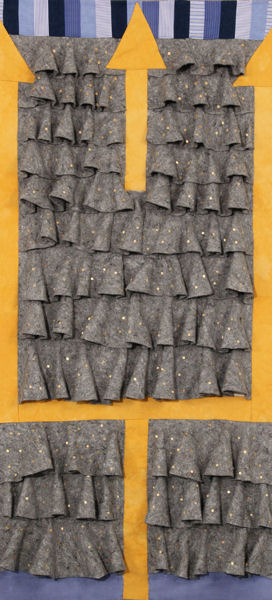
Olson learned about biosolids, phosphorus recovery, and the science behind wastewater treatment at the Stickney Water Reclamation Plant to help her develop artwork including the Poseidon’s Siblings piece. Photo courtesy of Olson.
Currently, Olson is serving as the first-ever artist-in-residence at the Fermi National Accelerator Laboratory in Batavia, Ill. She is spending a year observing and using her art to illustrate particle physics. Her work there is on display at the Fermilab Art Gallery through April 22.
“What I like about Lindsay’s work is that each piece is beautiful,” explains Fermilab Art Gallery curator Georgia Schwender, who recruited Olson for the artist-in-residence position. “But spend some time with them, and you see that she understands the science and portrays it in a way that has never been done before. So much meaning is layered into each piece. Her art is a perfect fit with our goal of bringing science to those who might not otherwise experience it.”
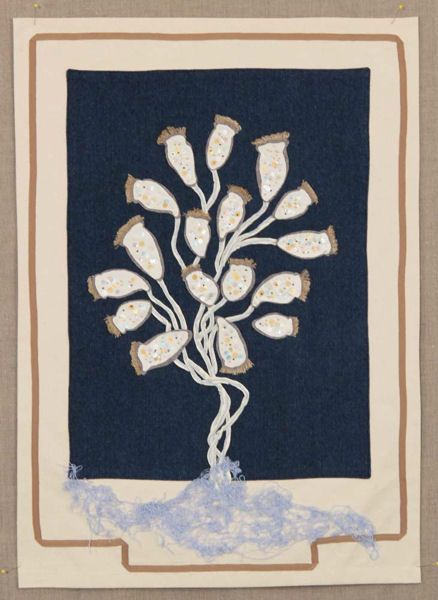
The Stalked Ciliate Carchesium piece is part of the Manufactured River exhibit. Photo courtesy of Olson.
Olson will remain at Fermilab through Oct. 15. After that, the sky’s the limit. She would love to study climate change at a place like the National Oceanic and Atmospheric Administration, she said. And she will continue to share what she’s already created.
“I don’t want to keep the learning bottled up,” Olson said. “I want to use it to help others discover how science and technology serve modern culture.”
— Mary Bufe, WEF Highlights








March 18, 2015
Featured